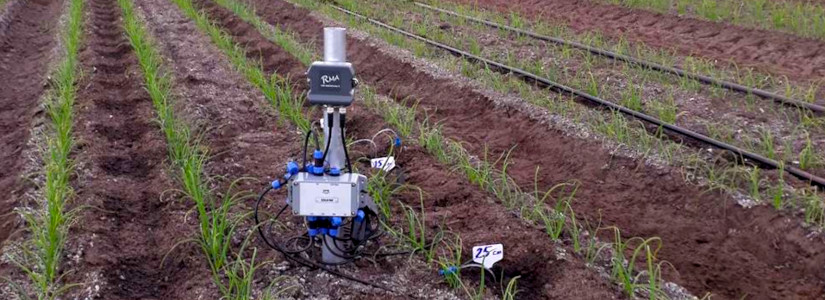Maximum growth and higher yields
The RMA nutrient sensor continuously measures how much nutrients are available for the crop in the root zone. The goal is to prevent shortages and surpluses and therefore to achieve maximum growth and higher yields.
Soil and nutrients
To measure the nutrients in the soil, the nutrient sensors have a membrane that is permeable to a specific element. The second membrane is impermeable. A small voltage is created between those 2 points to determine the concentration of nutrients. In combination with the moisture content, measured by the soil moisture sensor, the total availability of nutrients for the crop can be calculated.

Nutrient sensor
The RMA nutrient sensors are connected to a data logger with power supply. This data logger also reads the soil moisture sensor and optionally a rain gauge.
Smart dashboard
The data logger sends the measurements from the sensors to the Cloud of RMA and thus to the smart RMA dashboard. RMA works with 2 communication systems, 4G and LoRa. 4G can be used worldwide with a SIM card supplied by RMA. A small solar panel charges the battery of the datalogger. The datalogger via the LoRa version works on a small battery that can be replaced annually. The LoRa version is currently only used in the Netherlands. Unlike 4G, the LoRa version does not store data in the datalogger, but each measurement is stored directly in the Cloud. The datalogger has its own power supply and works completely autonomously.
Field trials
In 2013, RMA started testing suitable sensors to measure nutrients in the soil. The nutrient sensors have been tested in potatoes, leeks, onions and lilies in recent years.




